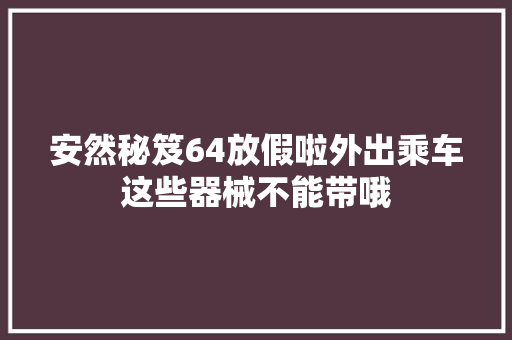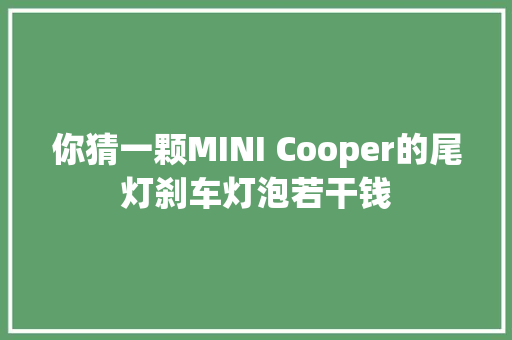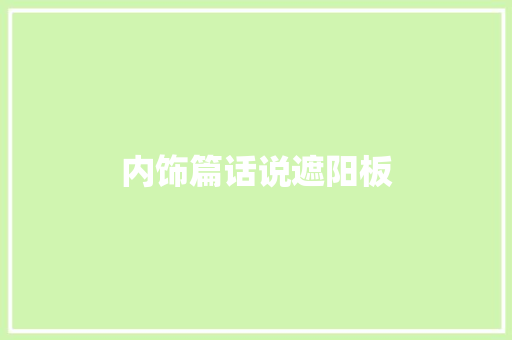这或许表明 “精细美男子”从春秋期间(公元前770-476年)开始就成为了一种盛行风尚。
位于陕西渭南市澄城县的刘家洼遗址是春秋早中期芮国的都城。

2017年,考古专家在刘家洼一处男性贵族墓中创造了一个精美的密封小铜罐,罐内保存有6克的残留物,引起业界广泛关注。
Researchers confirmed recently that traces of a substance found in a jar over 2,000 years old are a cosmetic face cream for men that was used to whiten the skin, illustrating that the desire to be physically attractive as measured by the standards of that period, is a shared wish of both ancient and modern man.
After several years of complex analysis, six grams of residue in a delicate, sealed bronze jar found in 2017 in the grave of an ancient Chinese nobleman of the Spring and Autumn Period (770-476 BC) is thought to likely be a cosmetic, adding a significant new piece to the puzzle of early human activity, experts said.
经由数年的化学剖析,该残留物被证明为由牛脂作为基质稠浊一水碳酸钙颗粒,一种美白面霜。
“这既是中国迄今最早的男性扮装品,也是中国已知最早的面脂,将中国先民制作美容面脂的历史提前了1000多年。” 陕西省考古研究院刘家洼芮国遗址考古现场卖力人孙战伟说。
After completing a complex chemical analysis, researchers proved the residue was made of ruminant fat mixed with monohydrocalcite that was probably used as a whitening face cream, said Sun Zhanwei, a researcher of the Shaanxi Academy of Archaeology, who led the Liujiawa field excavation project.
\"大众It's the oldest cosmetic for males ever discovered in China and the oldest face cream so far. It is more than 1,000 years older than previous written records,\公众 he said.
孙战伟说,扮装品在《韩非子》、《诗经》、《山海经》等文献中虽有记载,但描述大略,也没有考古实物验证。
中国所知首次记录面脂制作方法的古文献是南北朝期间《齐民要术》:“用牛髓。牛髓少者,用牛脂和之。若无髓,空用脂亦得也。”这次刘家洼遗址美容面脂的创造,表明中国东周先民就已经制作并利用以油脂为基质的美容面脂,这比《齐民要术》记载的要早1000多年,从而将中国先民制作面脂的历史提前了1000多年。
中国历史上已知对男性扮装记载比较多的是三国期间的美男子曹植、何晏等贵族阶层。而最新研究则证明,早在春秋早期中国就已存在男性扮装的社会风尚。“男性利用美白扮装品除了美容浸染外,也和当时大变革的社会环境干系联。” 孙战伟说。
Most historical records of males using cosmetics have been found in the era of Three Kingdoms (220-280). They tell the stories of famous handsome noblemen, such as Cao Zhi and He Yan. But the new findings showed that certain social customs existed far earlier, he said.
\公众Besides beautifying the skin, use of cosmetics is also related to the social environment, which underwent drastic changes.\公众
他说,该类微型铜容器多出土于贵族墓葬,是贵族彰显其身份的一种表现。“贵族阶层利用扮装品,在引领‘时尚’的同时,也是贵族阶层内部文化认同的外在表现。这解释男子扮装的历史悠久,充分表示出了古人生活的精细和对美的追求。虽然这位男性贵族在什么场合会用到此面霜尚未可知,能被埋到墓里,解释这个东西很宝贵。”
同时,刘家洼先民将牛脂运用于美容面脂等手工业的制作中,也为中国古代扮装品家当兴起以及油脂在手工业中的运用等研究供应了主要的参考。
Small bronze jars are often found in graves of nobles, and are a symbol of the aristocracy.
\"大众Nobles used cosmetics as a way to lead fashion trends and to express their cultural identity,\公众 Sun said. \"大众They also confirm the pursuit of a refined life and beauty among ancient Chinese men. Although we have no idea on what occasions the Liujiawa nobleman might have used the face cream, it should be regarded as a precious item, as it was important enough to be put into a grave.\公众
The find also provides an important reference for studies concerning the rise of the cosmetics industry and application of fat in the handicrafts industry, Sun added.
该铜罐的边缘呈椭圆形,最长轴距5.5厘米,最短4.3厘米;高5.9厘米。表面有精细而讲求的花纹。该小罐放置在墓内的西北部,而其它青铜礼器集中放置在东南角,这解释二者的功用不同。
孙战伟说,这类器物以往曾被创造过,有学者也推测其功用该当是扮装品盒,但当时短缺考古实物证据。该器物创造时盖、器合体,保存完全,其内仍保留有块状残留物,团队及时将样品送中国科学院大学进行干系检测剖析。
The rim of the jar is elliptical, with a major axis of 5.5 centimeters and a minor axis of 4.3 cm. The height of the jar is 5.9 cm. Its surface has complex and refined artistic patterns.
The jar was found in the northwestern corner of the grave, far from other bronze containers in the southeastern corner that were used for sacrificial rituals, banquets and funerals. The placement suggests that the function of the jar is different from the others, Sun said.
Some archaeologists suspected the jar contained cosmetics, but there was no hard evidence. Samples of the residue were sent for analysis to the University of the Chinese Academy of Sciences in Beijing.
来自中国科学院大学、陕西省考古研究院、北京大学和德国马普学会人类历史科学研究所的专家开展互助,利用当代前辈技能手段,对微型铜罐内的残留物完成综合剖析。
论文提到:扮装品在中国有很长的历史,但其起源不甚知晓。推测有可能是起源于春秋期间,但其制造者和利用情形不明。该面霜的创造为我国早期扮装品生产和扮装品容器的盛行供应了案例,成为了我国早期扮装品家当兴起的主要依据。
\"大众Cosmetics have a long history in China, though their origin has remained unclear. They potentially originated in the Spring and Autumn Period but little is known about its early manufacture and use,\公众 according to a paper co-written by researchers from the university, together with the Shaanxi Academy of Archaeology, Peking University and the Max Planck Institute for the Science of Human History in Germany. The paper was published in the journal Archaeometry in February.
\"大众This work provides an early example of cosmeticsproduction in China and, together with the prevalence of similar cosmetic containers during this period, suggests the rise of an incipient cosmetics industry,\"大众 the paper said.
论文还提到,面霜中的一种身分一水碳酸钙来自于石灰岩洞中的一种分外钟乳石“月奶石”。并且很有可能是道家人士从洞穴中采集来的。
道家起源于春秋期间,推崇龟龄、永生和救赎。道家崇拜洞穴,有在“洞天福地”举办宗教仪式的传统。由于洞穴有“子宫”和“重生”的隐喻义。月奶石的开采以及其在面霜中的利用解释古代道家人士和贵族阶层交往密切,参与了他们的扮装品生产。
The paper added that monohydrocalcite, an ingredient in the cream, came from moonmilk, a special stalactite found in some limestone caves, and was likely collected by Taoists.
The Taoist school, a philosophical discipline originating in the Spring and Autumn Period, features the doctrine of longevity, immortality and salvation. Taoists admire caves and have hosted rituals in prestigious ones. Caves are considered metaphorical wombs that enable rebirth. Exploitation of the moonmilk reflects the link between early Taoists and cosmetics production for the aristocracy, the paper said.
不足为奇,近日,考古事情者对山西垣曲北白鹅墓地出土的铜盒中的残留物剖析创造,该残留物因此油脂、植物精油、朱砂及以方解石、霰石为紧张身分的扮装品,证明了其应为高档级女性贵族盛放、储存扮装品的容器。
Archeologists found that the residue in bronze boxes unearthed at a grave in Yuanqu county in Shanxi province are cosmetics composed of fat, plant essential oil, cinnabar, calcite and aragonite, and used by female nobles.
人们对美的追求是共通的。考古创造,在西方,古希腊人、古罗马人、古雅典人、埃及人也都利用过各种各样的扮装品来润色自己的边幅。
公元前470-460年,用来装扮装品的小盒子或圆形盒子
古希腊人和古罗马人在面部扮装品中曾利用白铅和红铅,利用铅而呈现的极其苍白的脸庞一贯盛行到18世纪。埃及艳后克利奥佩特拉利用了玄色眼影粉,一种由油和粉状金属(常日是铅、锑、锰或铜)稠浊而成的眼线笔,以及一系列其它扮装品。她乃至还写了一本关于扮装品的书。
Ancient Greeks and Romans used lead in facial cosmetics, which resulted in an extremely pale face. The fashion prevailed until the 18th century. The queen of Egypt, Cleopatra, used black eye shadow powder, eyeliner made of oil and metal powder, and other cosmetics. She even wrote a book about it.
希腊妇女也利用天然成份,例如从泥土中提取的赭石及从地衣中提取的染料用于胭脂,用灰烬和煤烟灰用于眉毛上色。古希腊人也常常把他们最好的扮装品和喷鼻香水留在宅兆里。
Ancient Greek women used ocher from soil and dyes extracted from lichen to make rouge, and ashes to color their eyebrows. They also tended to put favorite cosmetics and perfume into their graves.
从古至今,人类从未停滞追求仙颜。这可以说是一种对美的神往和对精细生活的追求。在“悦己”之余,或许也为得到更多来自他人的尊重和青睐。
:陈美玲
演习生:李修智
综合:中国日报、山西·文博山西、丝路遗产
来源: 中国日报双语新闻









